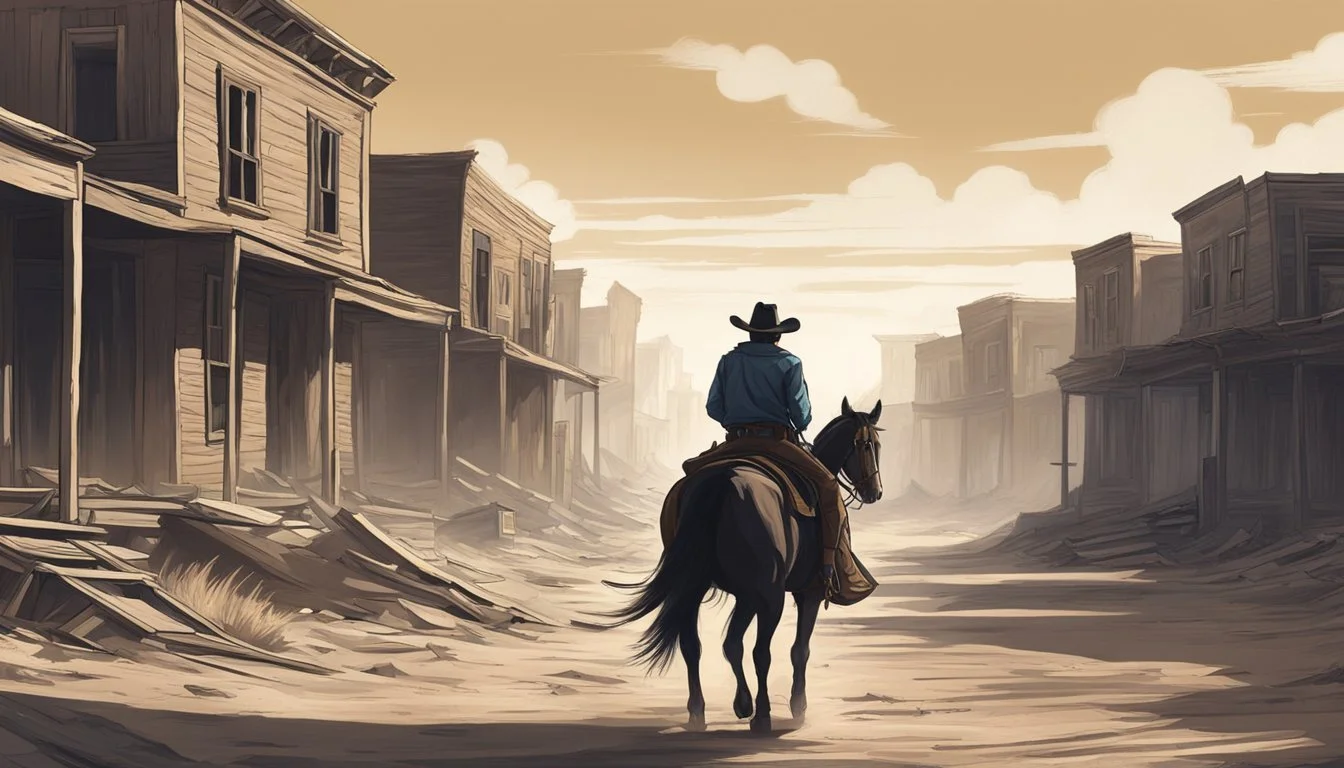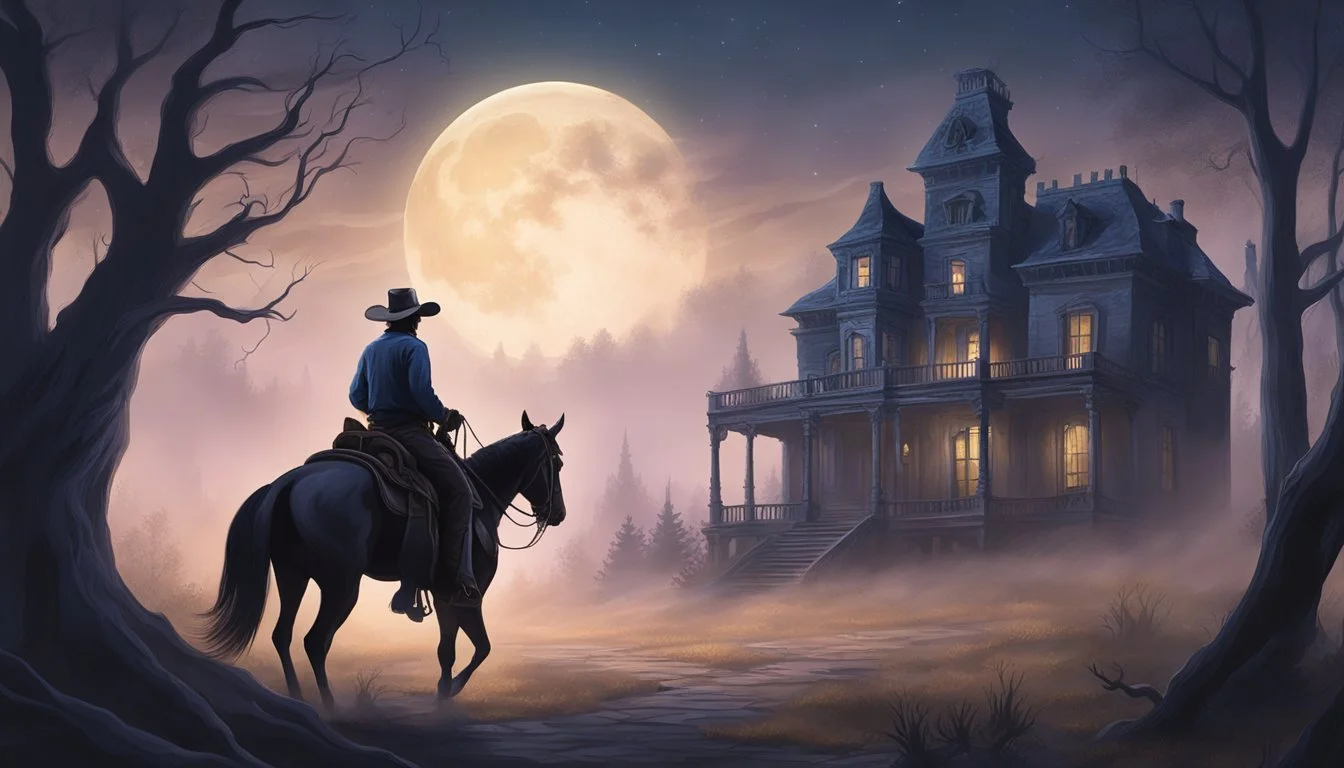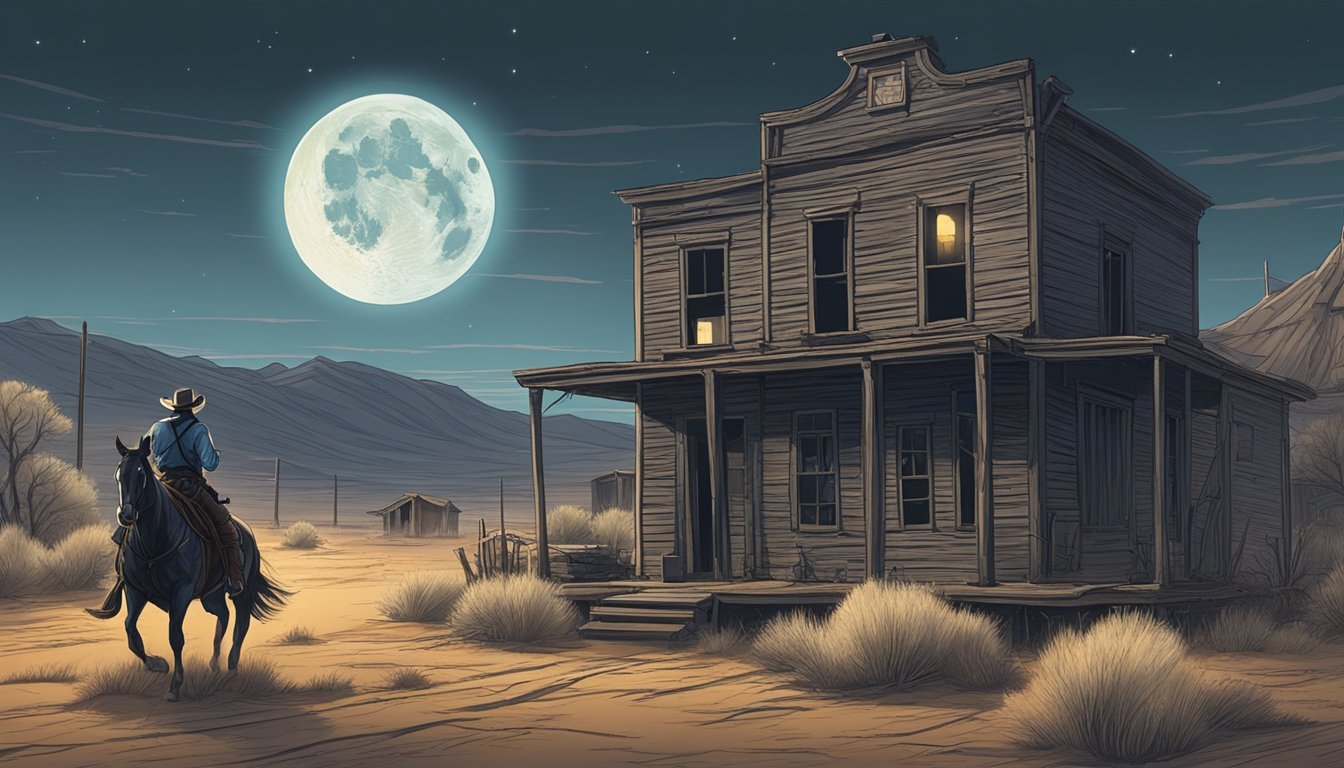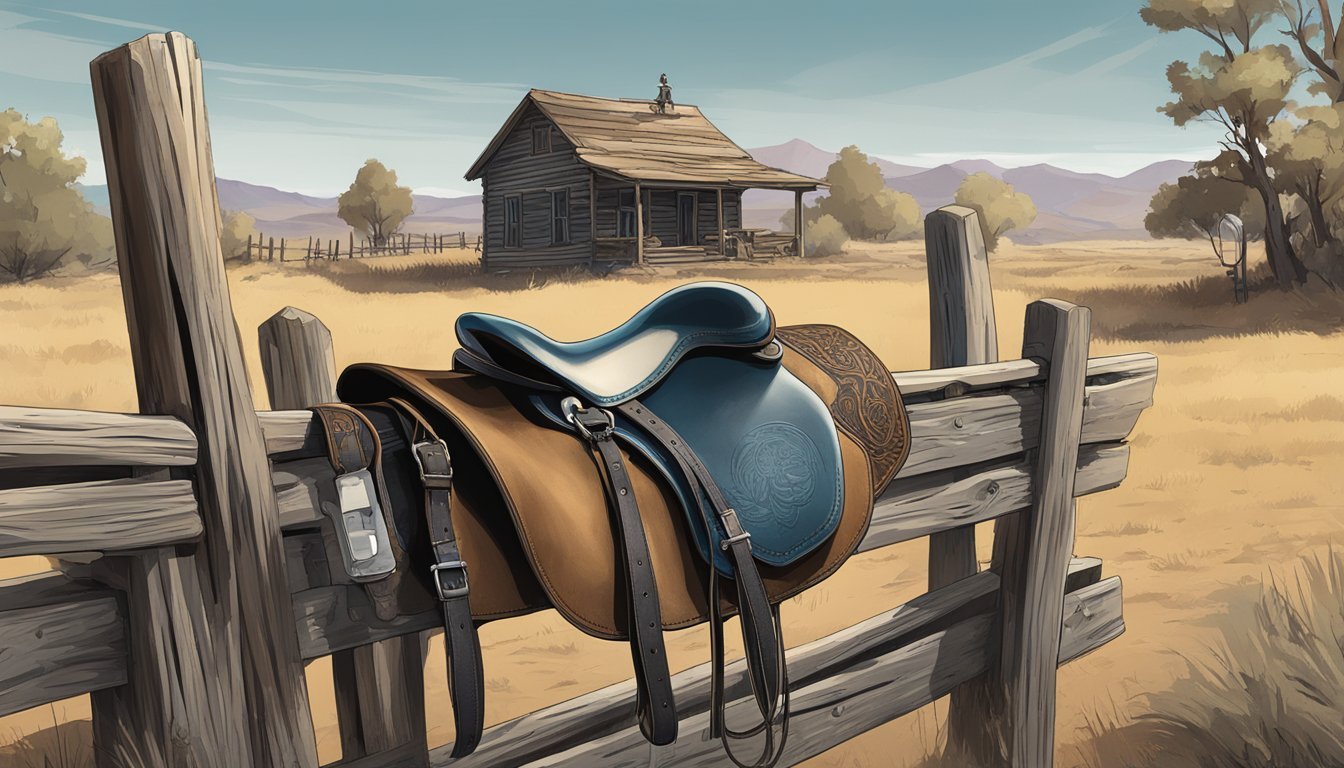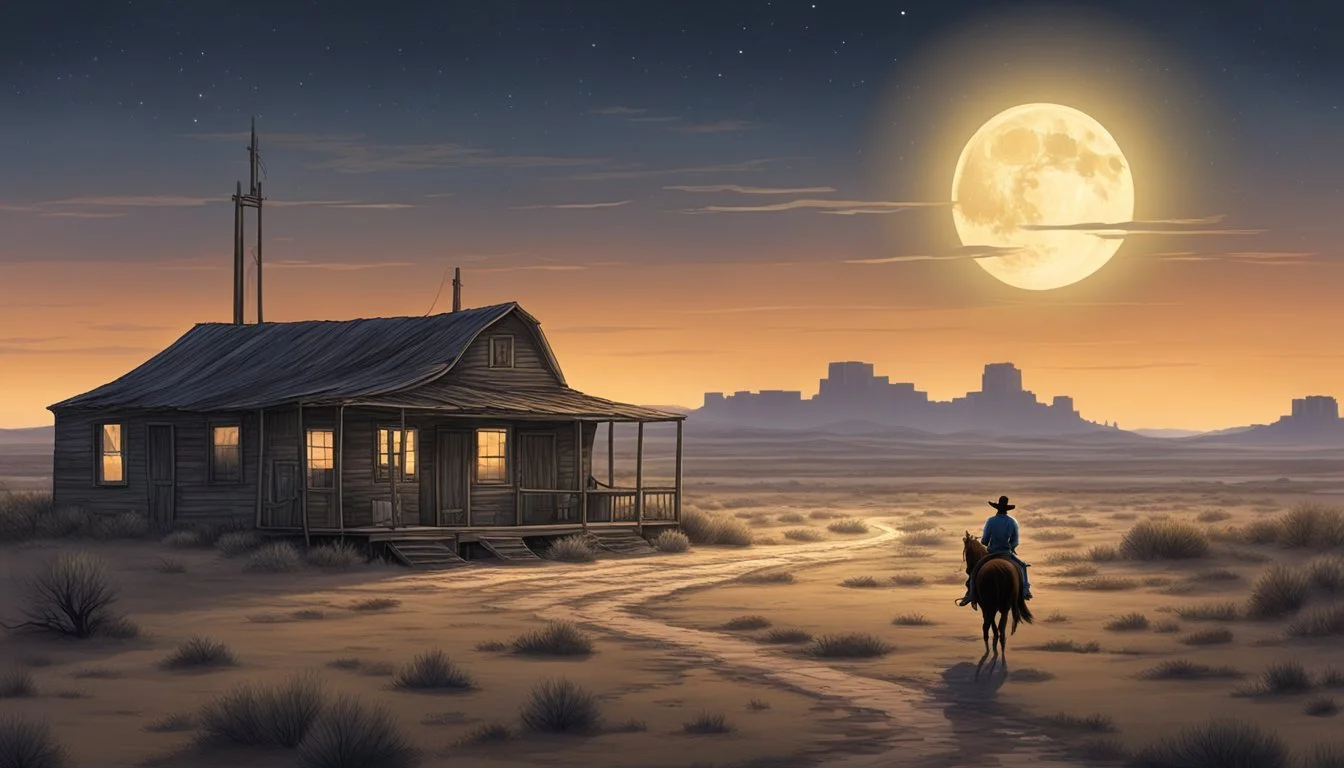The Texas Cowboy's Guide to State Hauntings
Unveiling the Most Eerie Destinations
Texas has long been synonymous with the iconic image of the cowboy, a symbol of rugged independence and a storied history etched into every corner of the Lone Star State's vast expanse. In the same spirit that cowboys of yesteryear ventured into the unknown, today's adventurers seek out the eerie whispers of the past that linger in Texas' most haunted locations. These places, steeped in history, offer a unique glimpse into the cowboy culture that once dominated these areas, and they resonate with the tales and legends of those who lived, loved, and lost in the old West.
The state's haunted locales are as diverse as its geography, ranging from the desolate ghost towns that dot the arid plains to the grand, historic hotels nestled within bustling city centers. Texas' reputation for hauntings is backed by numerous reports of ghost sightings, a high concentration of haunted sites per capita, and a dedicated community of paranormal investigators committed to exploring these mysterious phenomena.
As Texas continues to honor its cowboy heritage, the attraction to these most haunted places grows, inviting the brave to explore the supernatural side of the cowboy's homeland. Fusing the intrigue of paranormal activity with the enduring cowboy culture, these haunted sites present an unmissable journey for anyone curious about the state's rich and occasionally spectral history.
The Historical Roots of Texas Cowboys
The iconic Texas cowboys originated from the skilled vaqueros of Spanish and Mexican heritage, transforming into a symbol of the American West through the evolution of cattle drives and the establishment of rodeos.
From Vaqueros to Rodeos
The journey of the Texas cowboy began with the vaqueros, the skilled horsemen and cattle herders of Spanish lineage, who introduced their expertise to Texas in the 18th century. They were the forerunners of the cowboy culture, with their techniques in roping and ranching laying the foundation for what would become iconic cowboy skills. This proficiency in handling livestock later evolved into the spectacle of rodeos, a competitive demonstration of ranching skills that have become a celebrated part of Texas culture.
The Impact of Spanish and Mexican Heritage
The cowboy's existence is heavily influenced by the Spanish and Mexican traditions that preceded American settlement. Spanish colonizers brought with them the practice of ranching and the tradition of herding cattle on horseback, which was adopted and adapted by the early settlers in Texas. This cultural handover included everything from the design of the cowboy's equipment, such as the saddle and lariat, to the cattle herding techniques that were fundamental to the cowboy way of life.
Cattle Drives and the Cowboy Legacy
Cattle drives were a defining element of the cowboy legacy. Starting in the early 19th century, these drives were essentially long journeys where cowboys herded cattle from Texas to railheads in Kansas, traveling for months across the rough terrain of the American West. This challenging yet pivotal part of their history elevated the cowboy from mere ranchers to rugged symbols of American determination and independence. Cowboys became the living emblems of a rapidly expanding frontier, their legacy sealed by tales of bravery, solitude, and adventure.
Iconic Cowboy Culture and Style
The Texas cowboy epitomizes a rich culture, reflected in distinctive fashion, music, and the broader arts. Style and traditions born from this culture have permeated far beyond their origins, influencing modern trends and lifestyles.
Cowboy Fashion and Design
Cowboy boots and hats are not just practical items; they are emblems of the cowboy identity, combining function with style. Cowboy boots, typically made of leather, feature high heels and pointed toes designed for horseback riding. Modern designs often incorporate intricate stitching and vibrant colors. Hats, usually wide-brimmed, protect against the sun and are crafted to withstand the rigors of ranch work. Today's cowboy fashion also inspires mainstream design, integrating cowboy aesthetics into contemporary wardrobes.
Key Elements of Cowboy Boots and Hats
Boots: High heels, pointed toes, leather construction
Hats: Wide-brimmed, durable, sun protection
Music and the Arts in Cowboy Life
Country music and cowboy culture are deeply intertwined, with the former often celebrating the latter's themes and stories. Instruments like steel guitars and fiddles are staples in country music, echoing the cowboy experience. The arts, encompassing literature and film, frequently portray cowboys as rugged icons of freedom, influencing popular perceptions of the lifestyle.
Influences in Music and Arts
Instruments: Steel guitars, fiddles
Themes: Rugged lifestyle, freedom
Cowboy-Inspired Trends and Influence
Cowboy culture extends into various contemporary trends. Urban fashion often adopts cowboy elements, such as innovative boot designs and hat styles. In the realm of interior design, rustic and Western motifs echo the cowboy aesthetic. The cowboy experience continues to shape attitudes and concepts about resilience, individualism, and connection to nature.
Trends Influenced by Cowboy Culture
Fashion: Urban adoption of cowboy elements
Design: Western motifs, rustic themes
Famous Haunted Locations Across Texas
Texas is a state steeped in history, with a past that has left a number of its locales reportedly echoing with the presence of apparitions. From the storied streets of San Antonio to the regal confines of the King Ranch, here are a few of the state's most haunted venues, where history's imprint has rendered a collection of enduring ghost stories.
San Antonio's Spirits of the West
San Antonio, a city pivotal to Texas history, is renowned for its vibrant past and subsequent stories of ghosts. The Alamo is a site of legendary hauntings, where visitors recount eerie encounters, cementing it as a cornerstone of paranormal lore in the state. Hotels, notably the Emily Morgan Hotel—705 E Houston St—are also local fulcrums for hauntings, with numerous guests reporting supernatural occurrences.
Austin: Hauntings in the Capital
Austin, Texas' capital city, is not merely a hub of politics and culture, but also a treasury of spectral legends. Theaters and old hotels in the downtown area are particularly noted for their paranormal activity, where past residents seem to linger beyond their mortal days. Austin's historical layers contribute to its array of haunting tales that attract ghost hunters and curious visitors alike.
The Ghosts of Fort Worth
Emanating from the era of cattle barons, Fort Worth carries its own set of ghostly narratives. The Baker Hotel in nearby Mineral Wells, once a retreat for the wealthy, captures the essence of such hauntings. Although it's now silent of the living, the echoes of the past are said to reverberate through its abandoned halls, with tales of sightings and unexplained phenomena.
Mysteries of the King Ranch
Down in South Texas, the King Ranch sprawls across the landscape, an emblem of Texas' ranching magnificence. But it's not just famous for its size and contributions to the industry; it is also enveloped in mystery with stories of ghosts that wander its vast acreage. These stories root in the rich tapestry of the ranch's storied existence, adding a spectral dimension to its legacy.
Daily Life and Responsibilities of Modern Cowboys
The daily life of modern Texas cowboys revolves around meticulous ranch management, honing skilled trades, and preserving the competitive spirit of rodeos. Their responsibilities extend beyond the romanticized sundown silhouettes to encapsulate a blend of traditional practices and contemporary ranching demands.
Ranching and Herding: A Day's Work
A cowboy's day typically starts at dawn. They are responsible for a wide variety of tasks on the cattle ranch, which include:
Feeding: Ensuring all livestock have access to feed and water.
Health Checks: Monitoring the health of the herd and isolating any sick animals for treatment.
Maintenance: Repairing fences, maintaining ranch equipment and facilities.
The act of herding involves guiding cattle from one location to another, be it for grazing purposes or in preparation for transport. Cowboys must regularly brand and sort livestock, a task that requires a delicate balance of firmness and care.
The Roping and Riding Skills of the Cowboy
Roping and riding remain central to cowboy responsibilities. Proficiency in these skills is vital for daily tasks such as:
Catching Livestock: Safely and effectively using lassos to capture individual animals.
Horse Riding: Navigating the ranch and herding cattle while mounted, which demands expert horsemanship.
Training and care for their horses are also of paramount importance, as a cowboy's mount is both a working partner and a key tool of the trade.
The Role of Modern Rodeos
Rodeos showcase the competitive aspect of cowboy culture. Modern cowboys participate in these events to demonstrate their expertise in:
Bronc Riding: Riders must stay atop a bucking horse, displaying balance and tenacity.
Barrel Racing: Timed event focusing on speed and precision in a cloverleaf pattern.
Bull Riding: Perhaps the most well-known event, where cowboys attempt to stay on a bucking bull for eight seconds.
These contests not only honor traditional cowboy skills but also serve as a means for cowboys to gain recognition and uphold the cultural heritage of the Texas cowboy.
The Evolution of Cowboy Gear and Technology
The transformation of cowboy gear and technology over time is a testament to the ingenuity of riders and ropers. From the early days on the open range to the influence of mass media, each phase brought advancements that have streamlined cowboy tasks and become emblematic of the Western lifestyle.
The Innovations in Horseback Riding
Saddle Up: The design of the cowboy saddle has evolved from rudimentary beginnings to incorporate comfort for both the rider and the horse. Early saddles were simple and functional, but modern designs include specialized padding and shock absorption technologies. This ensures enhanced horsemanship by allowing for better control and less fatigue.
Saddle materials: Adoption of lightweight, durable materials
Stirrup design: Changes to improve safety and foot support
Saddle trees: Tailored to horse's back shape for even weight distribution
Roping and Rodeo Technology
Roping has seen significant advancements due to the use of stronger, more resilient materials. Early ropes were made from rawhide or grass, but today's lariats are often crafted from synthetic fibers that offer improved strength and flexibility. Roping mechanics in rodeos also advanced, with breakaway honda designs to ensure the safety of calves during tie-down roping events.
Rope Composition: From natural fibers to high-strength polymers
Rodeo Equipment: Development of safer and more reliable gear
Barbed Wire Usage: Impact on open range and the need for precision in roping
The Influence of Media on Cowboy Gear
Television and film have significantly influenced cowboy attire and gear, often shaping public perception of what cowboys should look like. The portrayal of cowboys on TV led to an increase in the popularity of specific gear designs, with an emphasis on aesthetic elements that reflect the arts of the Wild West era. This includes everything from ornately decorated boots to stylized hats that combine form and function.
Media-Inspired Trends: Evolution of gear aesthetics
TV's Impact: How television shaped the iconic cowboy image
Gear as Art: The artistic elements in gear design
Preserving Cowboy Heritage and the Environment
In the quest to maintain the pastoral lore of Texas and its cowboy culture, concerted efforts have been put forth to ensure that the environment—particularly in West Texas—remains unspoiled. Initiating and upholding conservation actions affirm a mutual respect between ranching practices and nature’s equilibrium.
Conservation Efforts in West Texas
West Texas, an area synonymous with vast open spaces and cowboy legends, stands at the forefront of conservation, emphasizing the stewardship of natural resources. Conservation organizations actively collaborate with local ranchers to preserve critical habitats and native species. Among these initiatives are the protection of large tracts of land through the establishment of parks and nature reserves. By setting aside such areas, Texas not only defends its environment but also its storied culture and history.
Key Conservation Programs in West Texas:
Parks and Wildlife Conservation: Management and creation of state parks that conserve natural areas while offering a glimpse into cowboy heritage.
Land Trusts and Easements: Partnerships with ranchers to place land under conservation easements, preventing development and preserving the natural state.
Ranching and the Balance with Nature
Given the historical significance of ranching in the Texan narrative, current ranchers hold a crucial role in shaping a sustainable future. They implement eco-friendly practices that dovetail with the preservation of the environment, affirming their commitment to both heritage and habit. Ranchers engage in techniques such as rotational grazing and brush management, promoting soil health and biodiversity. By intuitively understanding the land, they champion a balance that nourishes both livestock and local ecosystems.
Sustainable Ranching Practices:
Rotational Grazing: Livestock are moved between pastures to prevent overgrazing and to promote grass regrowth.
Brush Management: Control of invasive plant species that can disrupt local flora and fauna balance.
These approaches underline a modern consciousness that aims to keep the cowboy way of life viable, entwined with nature's well-being.
The Myth vs. Reality of the Texas Cowboy
The image of the Texas cowboy has evolved significantly over time, shaped by Hollywood's romanticism and literary portrayals, often diverging from the historical realities of the American West.
Hollywood and the Romanticized Cowboy
Hollywood has been instrumental in crafting the romanticized image of the cowboy. In films, the cowboy is frequently depicted as a rugged, independent white hero riding the open range. This portrayal emphasizes heroics and a simplified, glamorized version of life in the American West. The reality for cowboys, or cowpunchers as they were also known, was often less glamorous and consisted of hard, dangerous work for modest pay. They endured long hours, weather extremes, and the constant threat of injury, which starkly contrasts with the polished, fearless figures seen on the silver screen.
Literary Contributions to the Cowboy Image
Literary works have similarly contributed to the cowboy mythos. Books and dime novels from the 19th and 20th centuries romanticized the Texas cowboy experience, often ignoring the diversity and the daily grind faced by actual cowboys. While these stories helped embed the cowboy as an American icon, they frequently overlooked the teamwork and range of cultures that characterized true cowboy life in the American West. They also tended to understate the contributions of Mexican, Black, and Indigenous cowboys who played pivotal roles on the frontier.
Cowboy Legacy in Modern Day Texas
Texas's essence is rooted in the cowboy heritage, which manifests in business, health, and urban lifestyle today.
Cowboy Influence on Business and Economy
The cowboy symbolizes self-reliance and hard work, traits that resonate with the Texan business ethos. Texas Monthly has highlighted how the image of the cowboy is leveraged by businesses to embody the spirit of Texas. In Fort Worth, known as the 'Cowboy City', this heritage attracts tourists and drives economic activity. Local businesses often adopt the cowboy theme, contributing to a thriving economy built around the cowboy mystique.
Business sectors influenced:
Tourism: Themed events, historical tours, merchandise.
Ranching: Cowboy traditions live on in ranch management.
Health and Lifestyle: Cowboy Fitness and Diet
Cowboy culture extends beyond economic impact to influence the health and lifestyle of Texans. Cowboy fitness, inspired by the physically demanding tasks of the cowboy life, has taken shape in programs that promote functional strength and endurance. This includes ranch-based fitness retreats and cowboy-inspired boot camps in cities like Austin and Houston. Similarly, the cowboy diet, focusing on protein-rich meals, is a part of Texas's culinary tradition, reflecting a balance of historical and modern nutritional preferences.
Elements of cowboy diet:
Proteins: Beef, pork, poultry.
Sides: Beans, cornbread, and local vegetables.
Cowboy Culture in Urban Texas
In Urban Texas, cowboy culture survives not just in rodeos and apparel but also permeates daily life. City dwellers in Houston and Austin embrace the cowboy legacy through country music, dance halls, and Western-themed bars. Corporate professionals may don boots and Stetsons as a nod to this culture. Events such as the Houston Livestock Show and Rodeo bring cowboy culture into the urban setting, showcasing the enduring reverence for this legacy.
Urban manifestations:
Fashion: Cowboy boots and hats as a statement.
Entertainment: Country music festivals, rodeo events.

